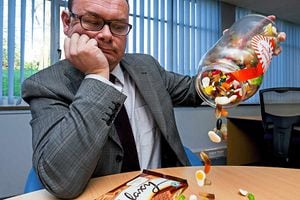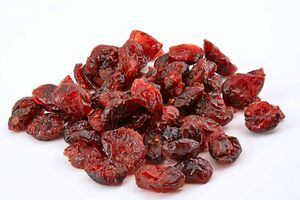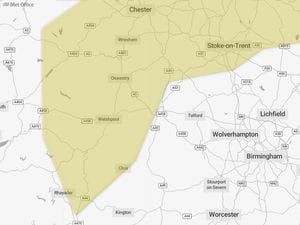Sugar: Cutting back on the white stuff is hard going
Sugar is the latest no-go area for healthy eaters. Mark Andrews attempts to curb his enthusiasm and follow guidelines instead.

It's not easy trying to keep track of your sugar intake. For a start sugar is in foods that you never imagined, and secondly the computer app released by Public Health England as the latest weapon in the war on obesity is flaky to say the least.
Earlier this month, the government body launched the Sugar Smart phone app to help people reduce their daily sugar intake. The device scans regular foodstuffs for their sugar content, to help people ensure they eat no more than 30g of added sugar each day.
At least it does when it works. My plan to spend a day living according to the guidelines doesn't get off to the easiest of starts, though, when the app fails to work. Having handed my phone over to a 20-something, it emerges that Sugar Smart is not compatible with all handsets, and all I can access are some slightly dubious adverts for a free replacement phone (trying to tell me something) and appears to be a dating site.
So with the technology letting us down, it was back to the more traditional methods of carefully studying the food labels for sugar content.

Charlotte Griffin is a Shrewsbury-based qualified nutritional therapist who offers dietary help through one-to-one consultations, group workshops and through weekend mountain-bike and healthy-eating events in the south Shropshire hills. This is her verdict on Mark's efforts:
Mark's daily diet, whilst not something I would generally recommend, does give an insight into what happens when we focus solely on addressing one element of our food intake, and not take a bigger picture approach and understand how different foods work together to provide us with the vitamins and minerals our body needs to function on a daily basis.
Yes there is a lot being said about sugar at the moment, and rightly so with the increased rate of chronic diseases like obesity and diabetes. But sugar is a complex area, there's not enough room in this paper to dedicate to it, but to simplify it to counting grams is in the same futile activity as calorie counting. A daily diet of processed, not great for you meals may equal the same calorie intake as three nutritionally sound meals – does that mean they are both providing equal benefits to our body and mind? No of course not.
With sugar, whilst creating awareness through the Sugar Smart app around how much refined sugars are in everyday items like fizzy drinks, microwave meals, sauces and alcohol, the advice is not doing a great job on explaining the differences between the different types of sugars and what they do to us. If we knew that then we'd be educated to make our own decisions and I'm sure would then want to manage our own level of sugar intake.
To simplify it, sugars that are refined, stripped bare to essentially give taste and added to all of the above and our cakes, cereals, biscuits, bread, the list goes on… does more harm than good. So cut them down and you will start to see and feel a benefit.
Sugars that are in its natural form, so those you find naturally occurring in milk, fruit, vegetables and whole grains also contain all of the supporting nutrients that naturally helps your body to deal with the sugar intake. Without getting too scientific what we want to do is substitute our foods for "Low Glycaemic Load" (GL) alternatives, so it's not about cutting out sugar completely, it's about making more sensible decisions. So consider brown rice over white rice, whole grain or rye bread instead of the tiger loaf, a bowl of jumbo porridge oats instead of Frosties. These lower GL foods essentially means the sugars in these foods break down more slowly in the body, our insulin response is slower and the sugar is taken into our cells in a timely manner preventing our body from experiencing a crazy sugar high followed by a crash and burn when our levels get too low, which leaves us reaching for the biscuit tin come 3pm. So don't blame yourself when you feel like this – your body is actually telling you to eat more, but it's a vicious circle that can be broken.
Our body needs sugar, like it needs protein and fats and vitamins and minerals to function. We just need to focus on accessing the right types of sugar – so more of those found in its natural state and less from the refined foods that they really don't need to be in. When we start doing that we automatically start to eat less processed foods, which often contain high levels of salt, trans fats and minimal nutrients, and start to eat more of the foods that our body craves – win, win.
And there's nothing wrong with the occasional pork scratching.
Now, let's be honest, I'm painfully aware that my diet would probably horrify the sort of people behind the Sugar Smart campaign. It isn't down to a lack of knowledge, as some people suggest, or a question of money. It is just that I am weak-willed. With a penchant for red meat, chips, pork scratchings, real ale and confectionary – but not always at once – I am exactly the sort of person the campaign is targeting.
It is not the first time I have tried to curtail my sugar intake. Ten years ago, I went from two spoonfuls of sugar in my coffee, to one-and-a-half. Then, about three years ago and mindful that my progress had slowed a little, I cut it down to one.
But sugar in coffee is just a drop in the ocean compared to some of the seemingly innocent little treats which most of us are probably partial to.
The giant bar of Galaxy – which I buy for economy purposes, honest – would obviously be staying in my desk, containing 218g of sugar — more than seven times the recommended daily intake. The same went for the giant jar of sweets. But surely a few of the butter biscuits which I usually start the day with would be safe? Well, not exactly. Each biscuit contains 3g of sugar, a tenth of the daily allowance. After a bit of heart-searching, I decide I can ration myself to a single biscuit.
It's not all bad news. Rummaging through my drawers as the hunger pangs begin to bite, it emerges pork scratchings are extremely low in sugar, less than 0.1 g per bag. I can eat 300 of those, then. They probably won't tick many other boxes for healthy eating, but hey, any port in a storm.
Probably a little more sensible are Kingsmill Mini Toasts – basically flavoured croutons – which contain 0.44g per bag, and apparently little else which is harmful for that matter. I'll have two bags then.
My wholegrain bread and butter-spread sandwiches make a reasonably low-sugar lunch, and I substitute my normal mug of coffee with a Bovril.
By mid-afternoon, though, the frustration is starting to set in. Desperate for the fresh flavour of "just natural" Mentos Mint Chews, I take a sneaky look at the packaging. Now I had suspected for a while that these might be tad naughty, given the spaced-out, light-headed feeling I sometimes get when I overindulge. But a 100g serving contains 69g of sugar – and that is only half a bag. Desperately counting the number of sweets in a bag like a deranged druggie, I calculate that each sweet contains about 6g of sugar. That's a fifth of my daily allowance. I'm not enjoying this.
The other difficult part is working out what you can and can't eat and drink. In the absence of the Sugar Smart app, there is a plethora of conflicting information about how much sugar some products contain. Initially, it appears that unsweetened instant coffee might contain sugar, but further research reveals this to be a false alarm. At 3.40pm I conclude it is safe to drink half a mug of coffee with no sugar. Yippee.
Choosing a low-sugar evening meal is actually not too difficult, providing you don't expect much in the way of seasoning.
My cottage pie contains a sensible 3g of sugar, and the accompanying five new potatoes about the same. I also have three bacon chews, containing 0.3g, and three mini toad-in-the-holes at 1. And a nice few dollops of HP Sauce? No chance. Harold Wilson's favourite condiment is a staggering 23.1 per cent sugar, and even a moderate amount is going to blow the limit.
Eventually, I decide I can afford a spoonful of HP, which will add 1.8g to my total, combined with a dash of the more virtuous Worcestershire sauce, which adds a further 0.9g. Half a mug of instant gravy is just half a gram of the white stuff, so things are looking good.
Ordinarily, my evening meal would be accompanied by a pint of ale, but following another set of guidelines from the department of health, I was having one of my two alcohol-free nights a week.
Truth be told, I had also been spooked by a rogue story published in a national tabloid a couple of years ago, which suggested that a pint of real ale contained nine spoonfuls of sugar. It doesn't. The newspaper retracted the story after it emerged the information was flawed, and beer is actually quite low in sugar. Grrr.
Instead, I have a small bottle of alcohol-free beer. It has the colour and texture of something concocted in a test tube, and is almost as low in sugar content as it is in flavour.
Still, mission almost accomplished.
The day almost over, and I have consumed just 21.1g of sugar – little more than two-thirds of my recommended daily allowance. Result.
Feeling pretty chuffed by my achievement, I decide I have earned myself a treat. Something a bit edgy, a touch decadent. I know, I'll have a mug of coffee with one sugar.
Well, you know, sometimes you just have to push the boat out.





